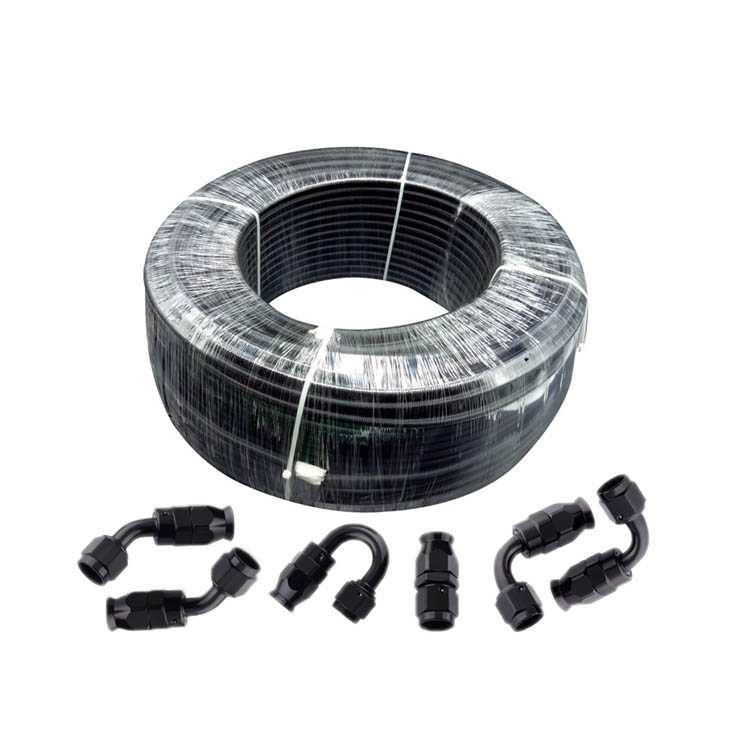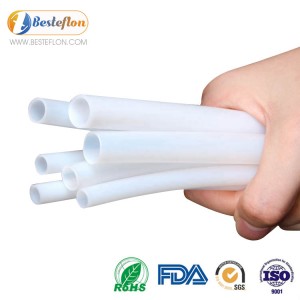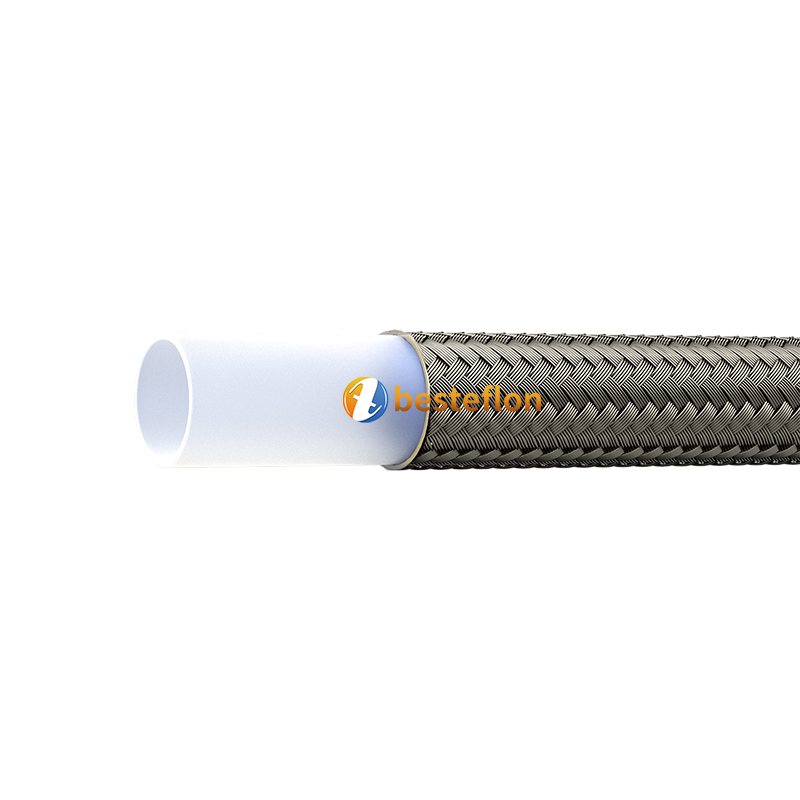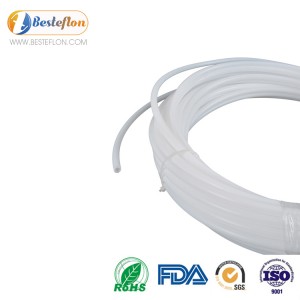Fluorine rubber (FKM) is a thermosetting elastomer, while polytetrafluoroethylene (PTFE) is a thermoplastic. Both are fluorinated materials, surrounded by fluorine atoms by carbon atoms, which makes them incredibly chemically resistant. In this article, the TRP polymer solution compares the two materials between FKM and PTFE to determine which is the final fluorinated material and choose the final PTFE hose manufacturer
Benefits of FKM rubber and PTFE
Origins:
FKM: Aircraft during World War II were plagued by the leakage of nitrile seals, which lacked the low temperature performance required for various applications. The chemical inertness of fluorocarbon bonds means that fluorinated elastomers, or fluoroelastomers, are a natural conclusion. So FKM rubber began to be commercialized in 1948
PTFE: In 1938, DuPont scientist Roy Plancott discovered polytetrafluoroethylene by accident. Plunkett experimented with refrigerants and stored them in cylinders. To his surprise, these gases aggregated, leaving behind a white waxy substance, which does not react with any chemical substances and can withstand extremely high temperatures. DuPont registered the first brand of PTFE materials-ptfe in 1945
Verdict: The development of PTFE is a coincidence of a fascinating fate, which led to the birth of an extraordinary material. However, an equally impressive material, FKM rubber, was completely necessary in the war years. For this reason, the historical contribution of FKM fluoroelastomer means that it is slightly better in this round of competition
Properties:
FKM rubber: FKM rubber contains strong carbon-fluorine bonds, making it highly chemical, heat-resistant and oxidation-resistant. FKM contains a different number of carbon-hydrogen bonds (a connection with weaker heat and chemical resistance), but still has stronger chemical resistance than most other elastomers.
PTFE: Polytetrafluoroethylene is composed of a chain of carbon atoms, with two fluorine atoms on each carbon atom. These fluorine atoms surround the carbon chain to form a dense molecule with a very strong carbon-fluorine bond and a polymer structure, making PTFE inert to most chemicals
Verdict: Based purely on their respective chemical composition, PTFE has no carbon-hydrogen bonds, which makes it more chemically inert than FKM (although FKM is still incredibly chemically resistant). For this reason, PTFE is just the shadow of FKM in this round
Advantages:
FKM:
Wide temperature range (-45°C-204°C)
Excellent chemical resistance
High density, good texture
Good mechanical properties
Can it be formulated for explosion decompression, CIP, SIP
PTFE:
Wide temperature resistance (-30°C to +200°C)
Chemically inert
Excellent electrical insulation
Highly cold and heat resistant
Non-adhesive, waterproof
The coefficient of friction is the smallest among all solids
Verdict: It is impossible to separate them this round. FKM provides greater temperature resistance, but does not reach the performance of PTFE in terms of chemical resistance. And PTFE is slightly less heat-resistant, but provides many ways of non-adhesive properties
Disadvantages:
FKM:
Will it swell in a fluorinated solvent?
Cannot be used with molten or gaseous alkali metals
Cost is higher than other non-fluorocarbons
Choosing the wrong FKM for the application can cause fast failure
Low temperature grades can be expensive
PTFE:
Low strength and stiffness
Can not be melt processed
Poor radiation resistance
High Shore hardness makes PTFE difficult to seal
Ptfe o-rings have a higher leakage rate than other elastomers
Inelasticity makes multiple seal installation impossible
Verdict: In general, FKM rubber won this round of competition with its superior strength, flexibility and sealing ability. Of course, if nothing but a chemically inert seal is not enough, then PTFE is a good choice. However, FKM provides more flexibility in all aspects!
Applications:
FKM:
Automotive
Chemical processing
Oil and gas
Heavy duty machinery
Aerospace
Many others
PTFE:
Chemical processing equipment
Valves
Chemical transport
Pump diaphragms
Verdict: It's another deadly battle! FKM has a wider range of applications, and can be applied to some really heavy applications. However, despite its limitations, PTFE materials provide the ultimate solution for the most difficult applications involving extreme pressure, temperature and corrosive chemicals
Cost:
FKM rubber is a premium product because of its chemical composition and subsequent chemical resistance. If you do not consider chemical properties and temperature resistance, you can choose a cheaper elastomer.
PTFE: PTFE material is also a high-quality product. Likewise, if the temperature, pressure, and corrosive chemicals involved in your application do not exceed the most extreme cases, then cheaper alternatives may be desirable. In order to obtain the best sealing performance, PTFE is bonded to the elastomer core to provide compression resistance.
Verdict: Both FKM and PTFE are high-quality products for good reasons. Both of these materials have special properties, which explains the cost of producing them. However, you should remember that for extreme applications, both provide special features. In this case, you get what you pay for, and cheap alternatives often fail quickly. This is ultimately a wrong economy.
Result: In general, the flexibility of FKM gives it an advantage in this hypothetical race. Ultimately, both of these fluorinated materials provide special chemical resistance and temperature resistance. However, as a plastic, PTFE is more rigid than FKM; making it only suitable for the most extreme sealing applications where high pressure and corrosive chemicals are the main concern. The wider applicability of FKM as a sealing material has, well, confirmed its victory!
We hope that this comparison of FKM rubber and PTFE will give you a better understanding of the various characteristics of each material. It must be emphasized that the best way to choose the most suitable material for your application is to talk to an expert who can tell you the various material grades and match the ideal solution for your application
The above is about FKM and PTFE related content introduction, I hope this article can help you, we are from China professional PTFE hose suppliers, welcome to consult our products and please freely contact us at sales 07@zx-ptfe.com
Searches related to ptfe hose:
Post time: Apr-16-2021




